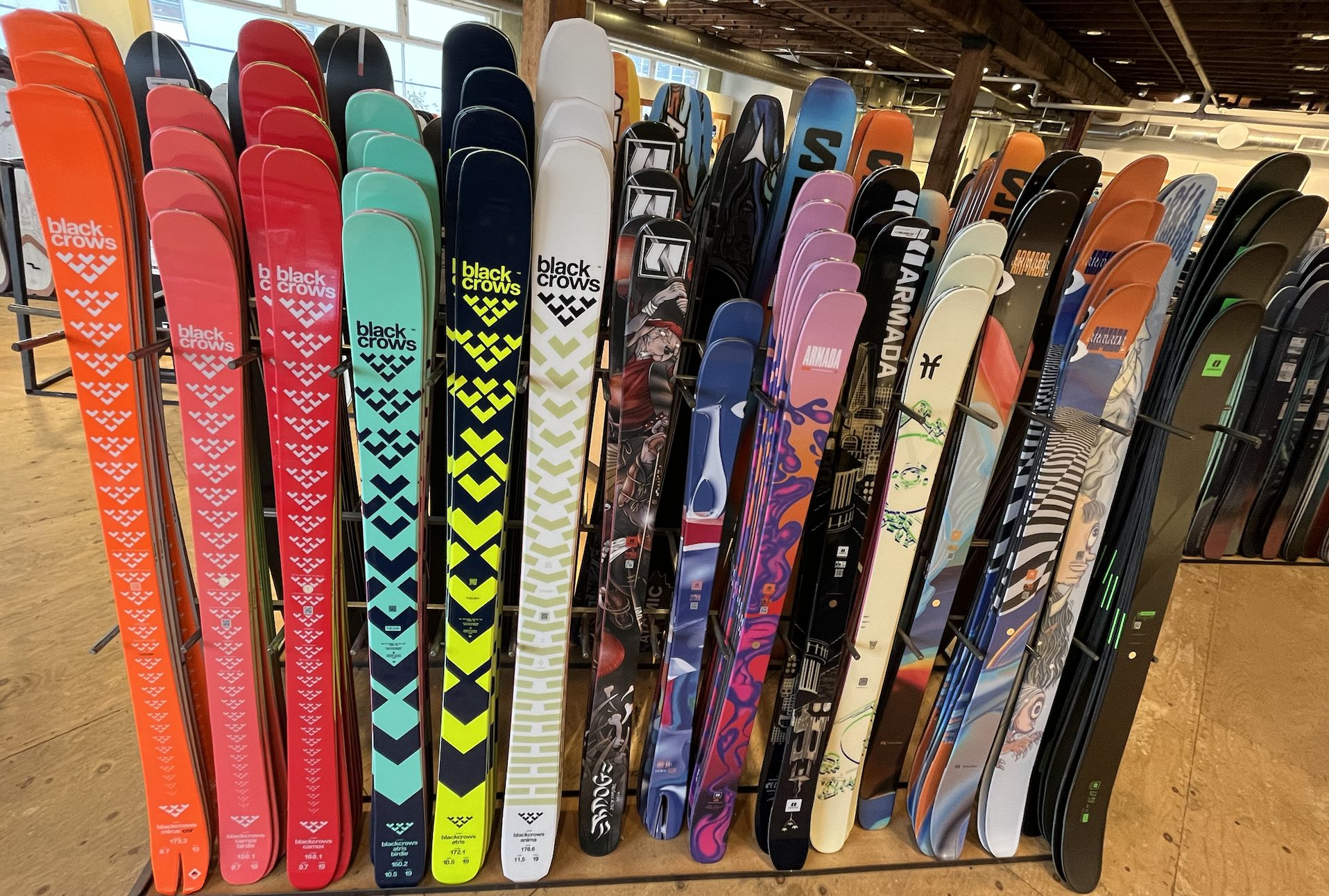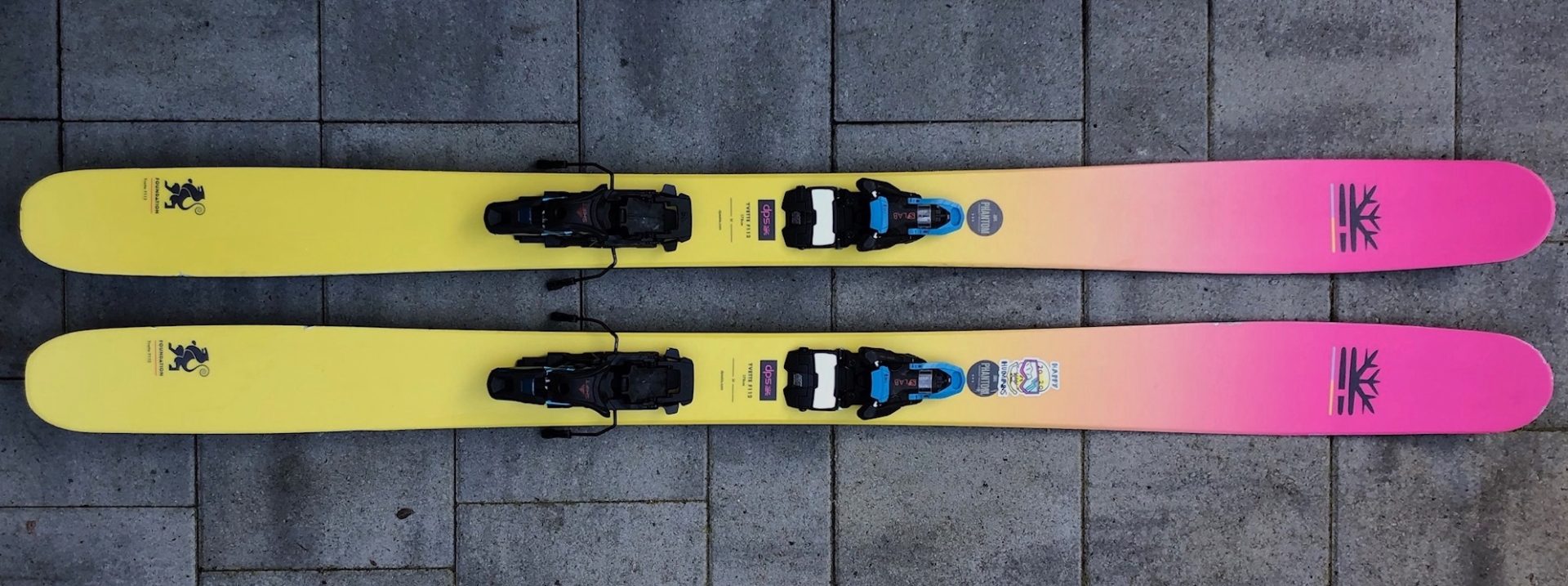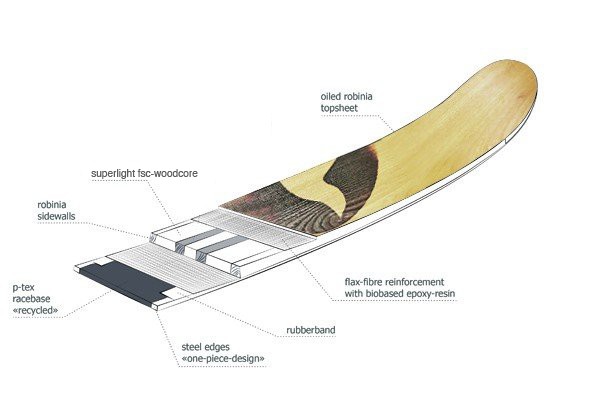
I’m a guy whose favorite pair of skis are DPS Yvettes— which I have long called my Paintbrushes. The Paintbrushes float, carve and bring me the exultation for which I yearn when I am turning in the trees. Technically, they are women’s skis— but what does that distinction even mean?
- Related: Men: Would You be Willing to Wear a Women’s Ski Boot if it Fit You Better than a Men’s Boot?

There are four main factors to mind when considering the construction of a ski: length/width, geometric design, stiffness, and core materials. Different types of skiers opt for different length and width of skis. Notably, women’s skis tend not to be produced in the longest sizes (184+ cm). On the other hand, women’s skis tend to have a similar variety of width as do men’s skis.
Geometric design is nuanced. Skis are often designed to specialize in certain conditions or for certain types of riders. For example, when a ski designer elects to create a bigger side-cut, they may sacrifice some of the ski’s flotation in favor of a tighter turning radius. This decision can make a ski more technically versatile.
Historically, ski manufacturers have made skis using different materials, depending on whether they were men’s or women’s skis. Women’s skis typically featured lighter core materials, such as Paulownia or lighter wood blends, because women tend to weigh less. With a lighter core, the skis are more maneuverable for a lighter rider. On the other hand, lighter materials may produce more chatter and be less resistant to choppy snow conditions.

Women’s skis tend to be more flexible than men’s skis. A ski’s flex pattern is determined by the relative stiffness of the ski’s tip and tail. A more flexible ski means that a person is able to initiate turns more easily; a less flexible ski means that a ski will better hold an edge. Given that, on average, men weigh more than women, it is often easier for them to convert that additional weight into turn initiation.
In recent times, some ski manufacturers have moved away from making “women’s” and “men’s” skis. Icelantic (a Golden, Colorado-based ski brand) allows filtering by gender on its website, but many of the exact same skis come up in either filter. ON3P Skis (a Portland, Oregon-based ski brand) has a website that does not allow filtering skis by gender. DPS Skis (a Salt Lake City, Utah-based ski brand) claims to have eliminated all manufacturing distinctions between men’s and women’s skis in the past few seasons— though they maintain different top sheets for aesthetic purposes. On the other hand, Black Crows (a Chamonix, France-based ski brand) releases skis specifically for female riders called the Birdies.
Overall, there are decreasing differences between skis labeled for women and those labeled for men. Given the many incredible athletes of varying shapes, sizes, genders, and interests, it makes sense for skiers to select their planks based on a robust series of considerations. And who, regardless of gender, wouldn’t want to ride on these tequila sunrise Paintbrushes?
